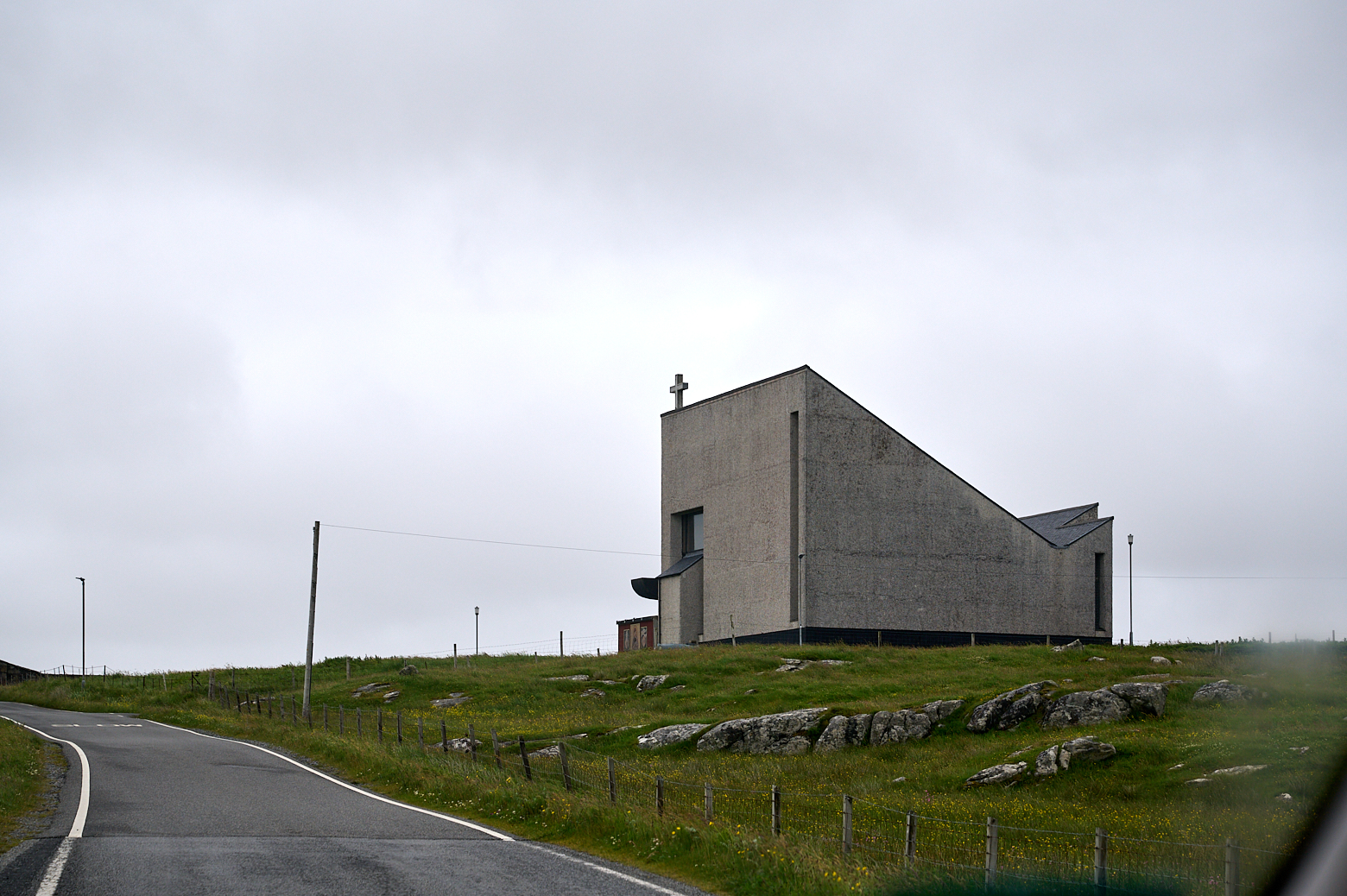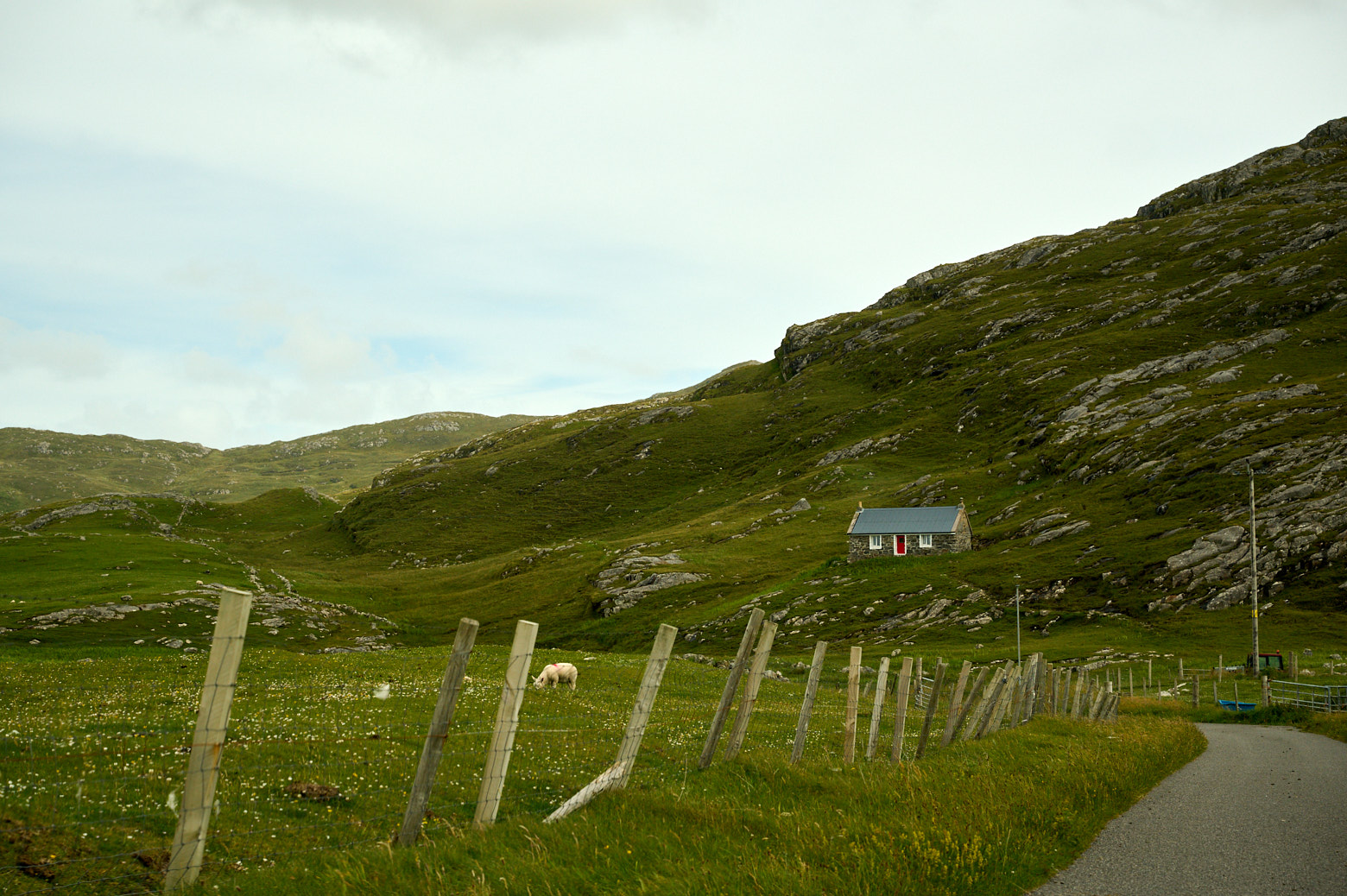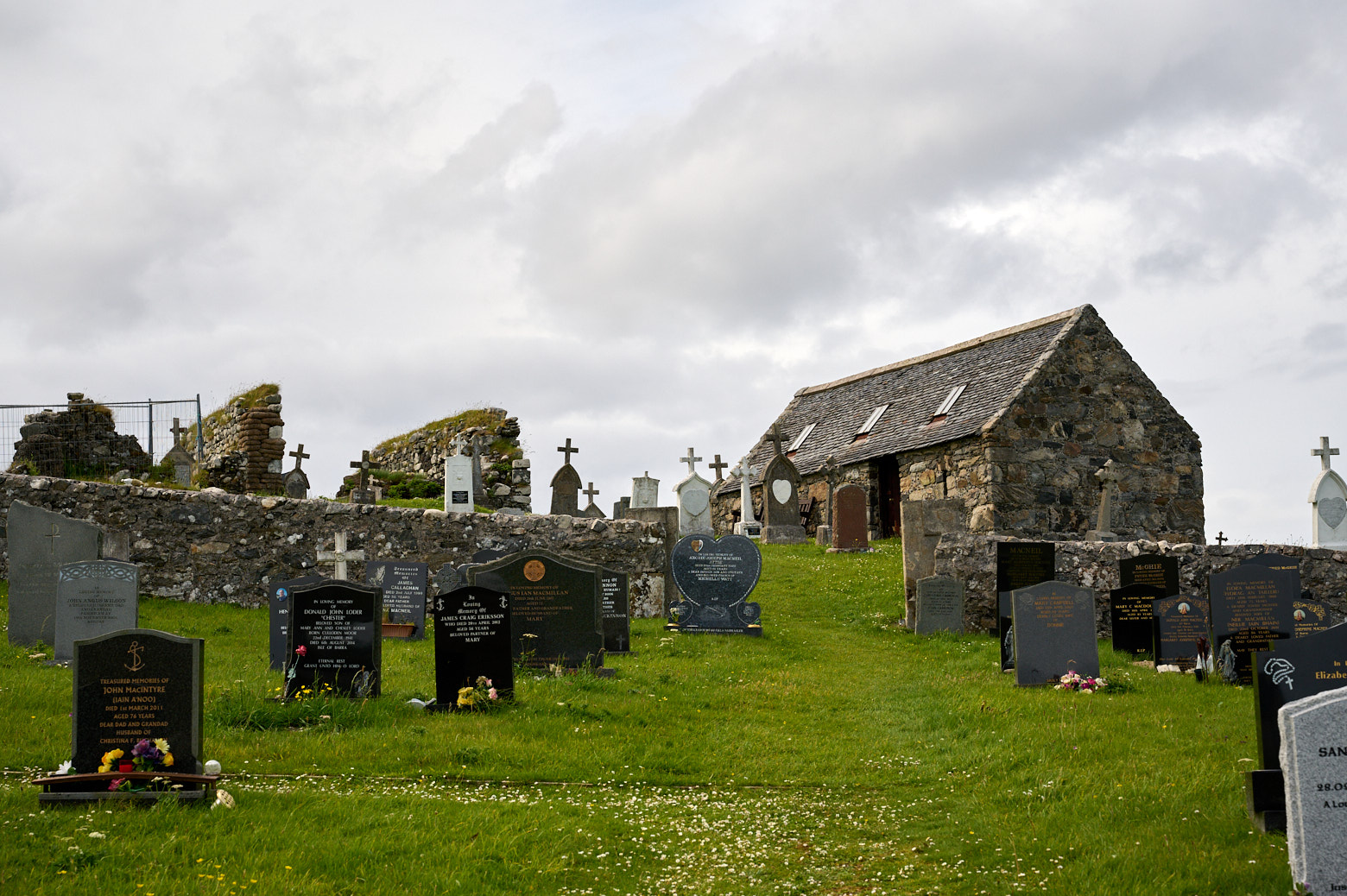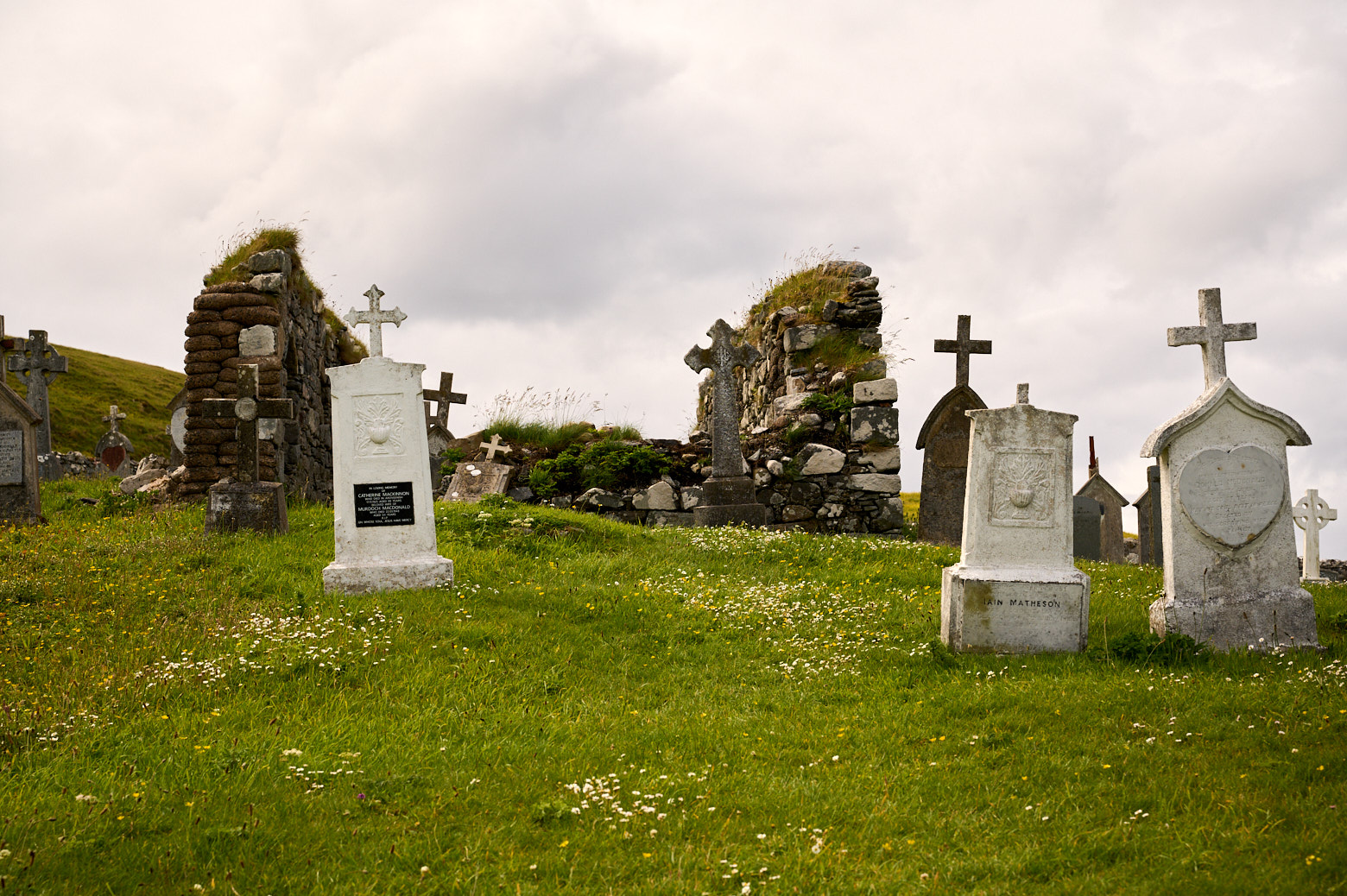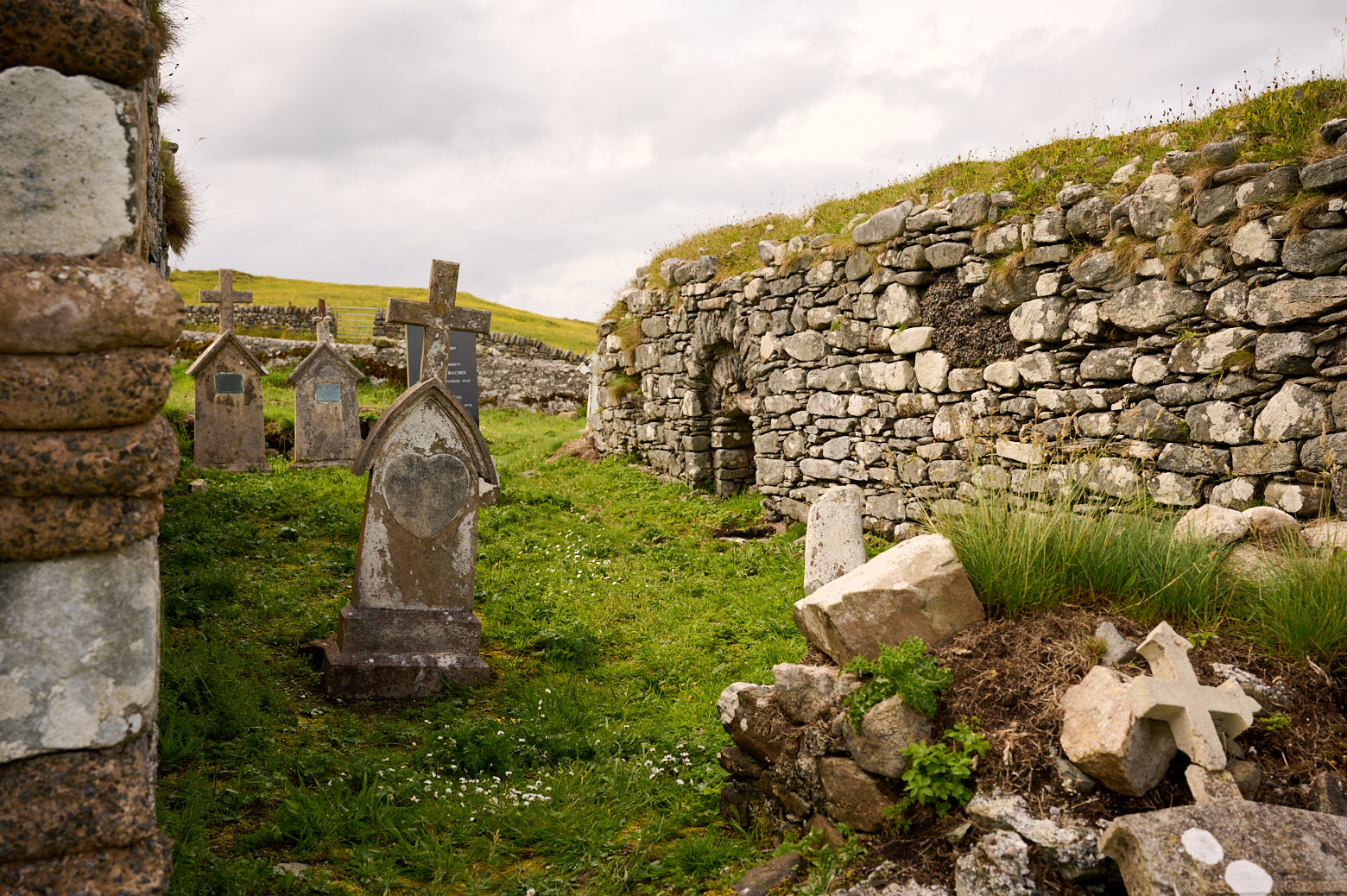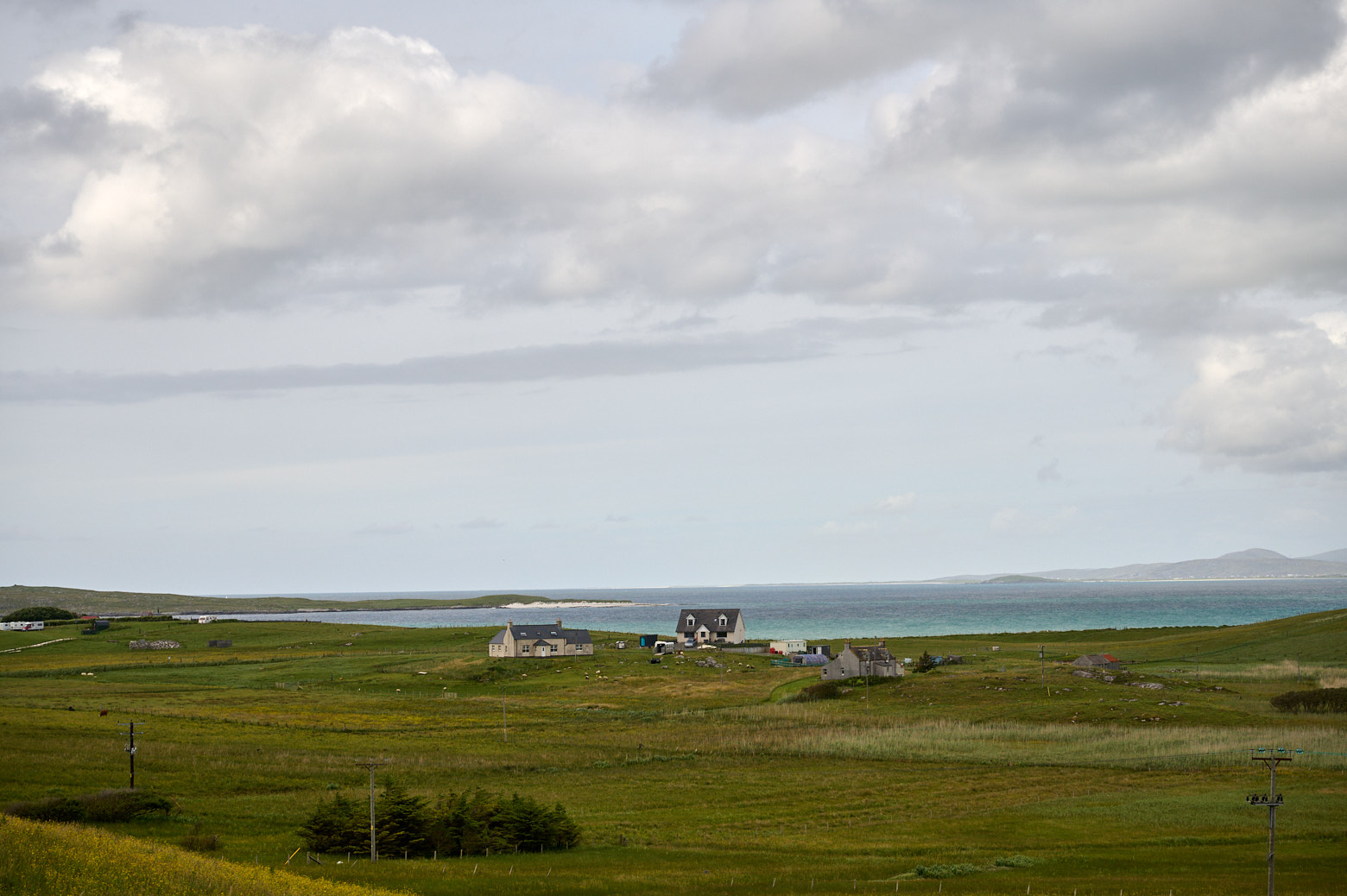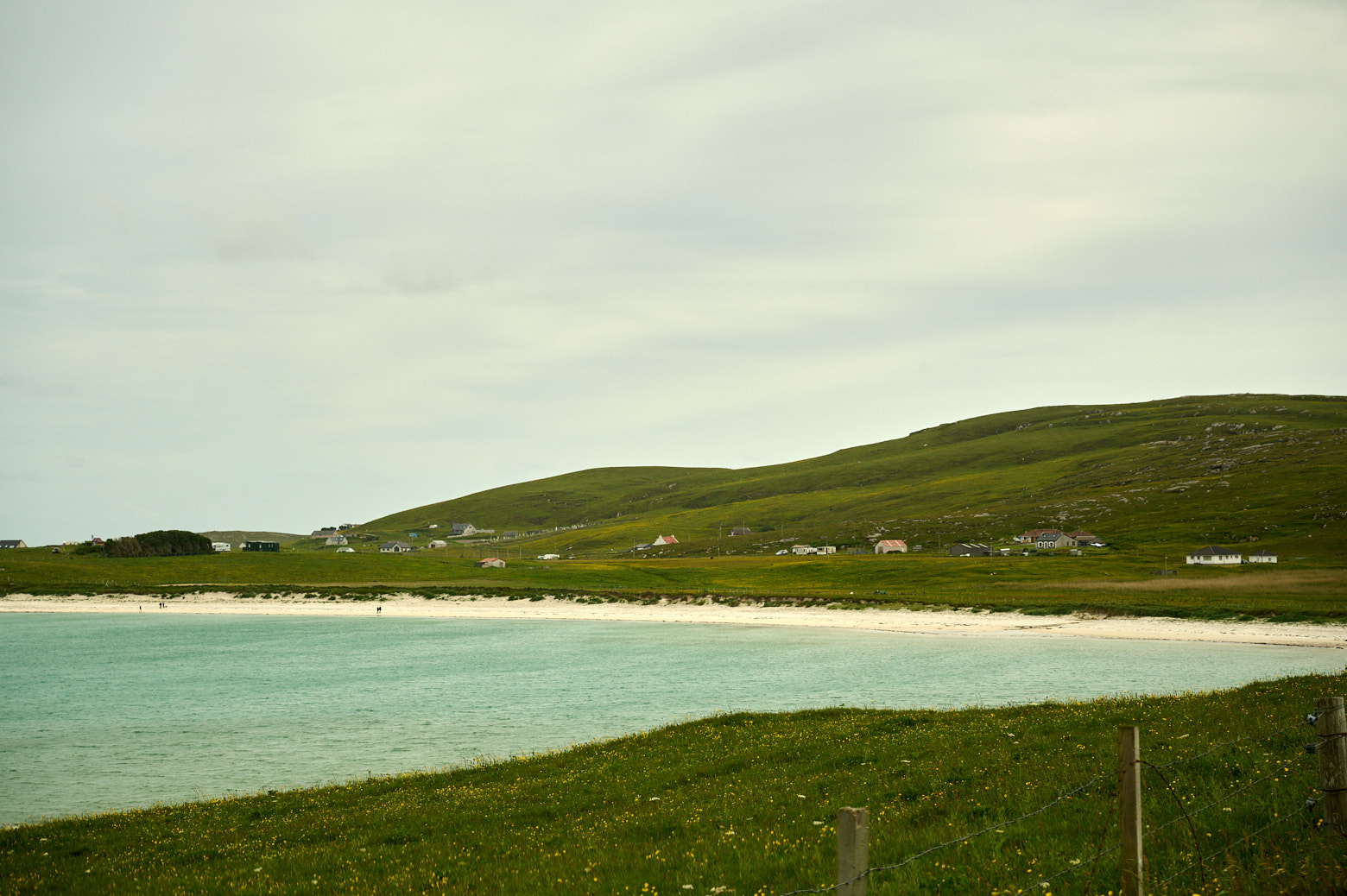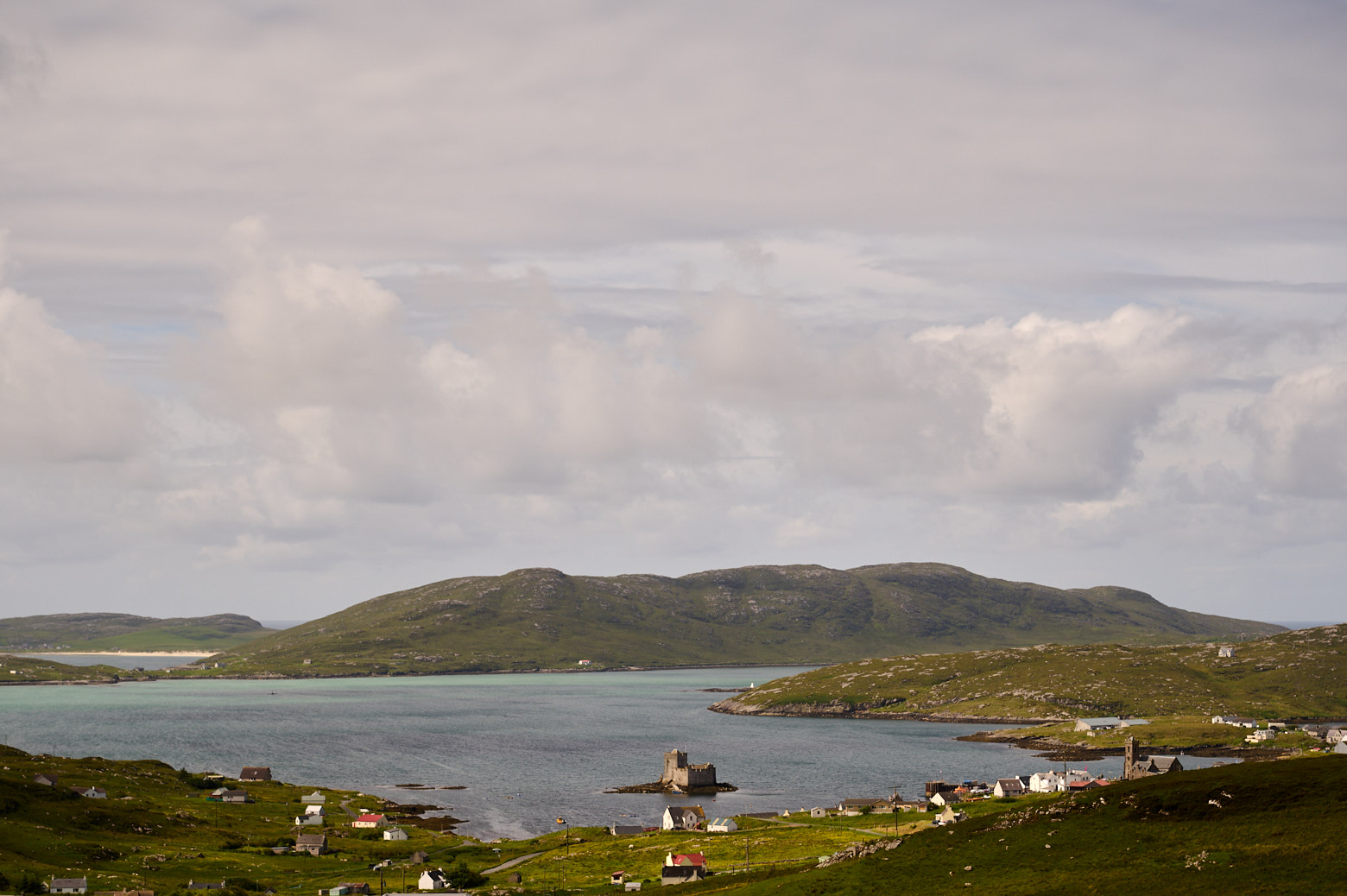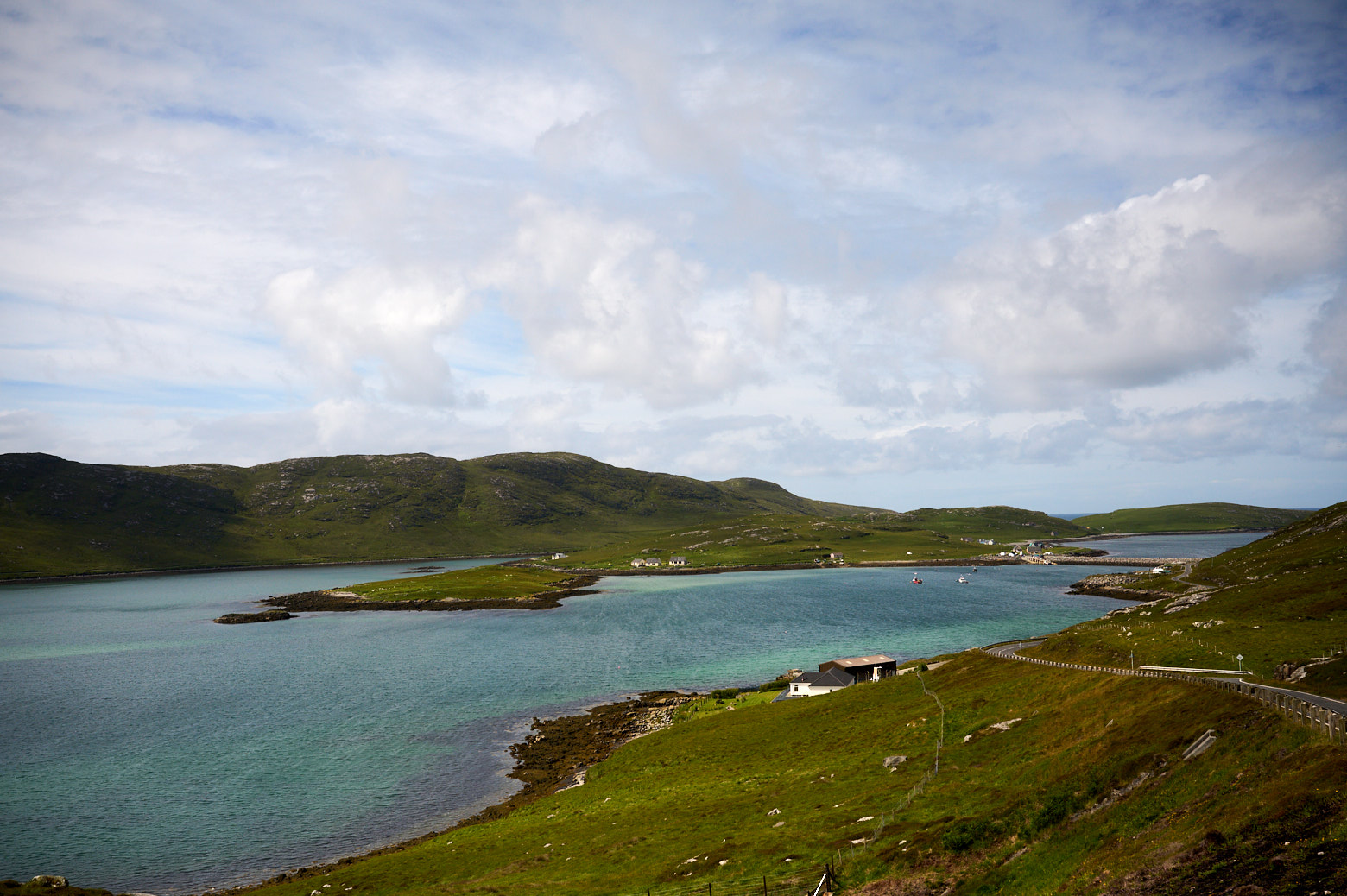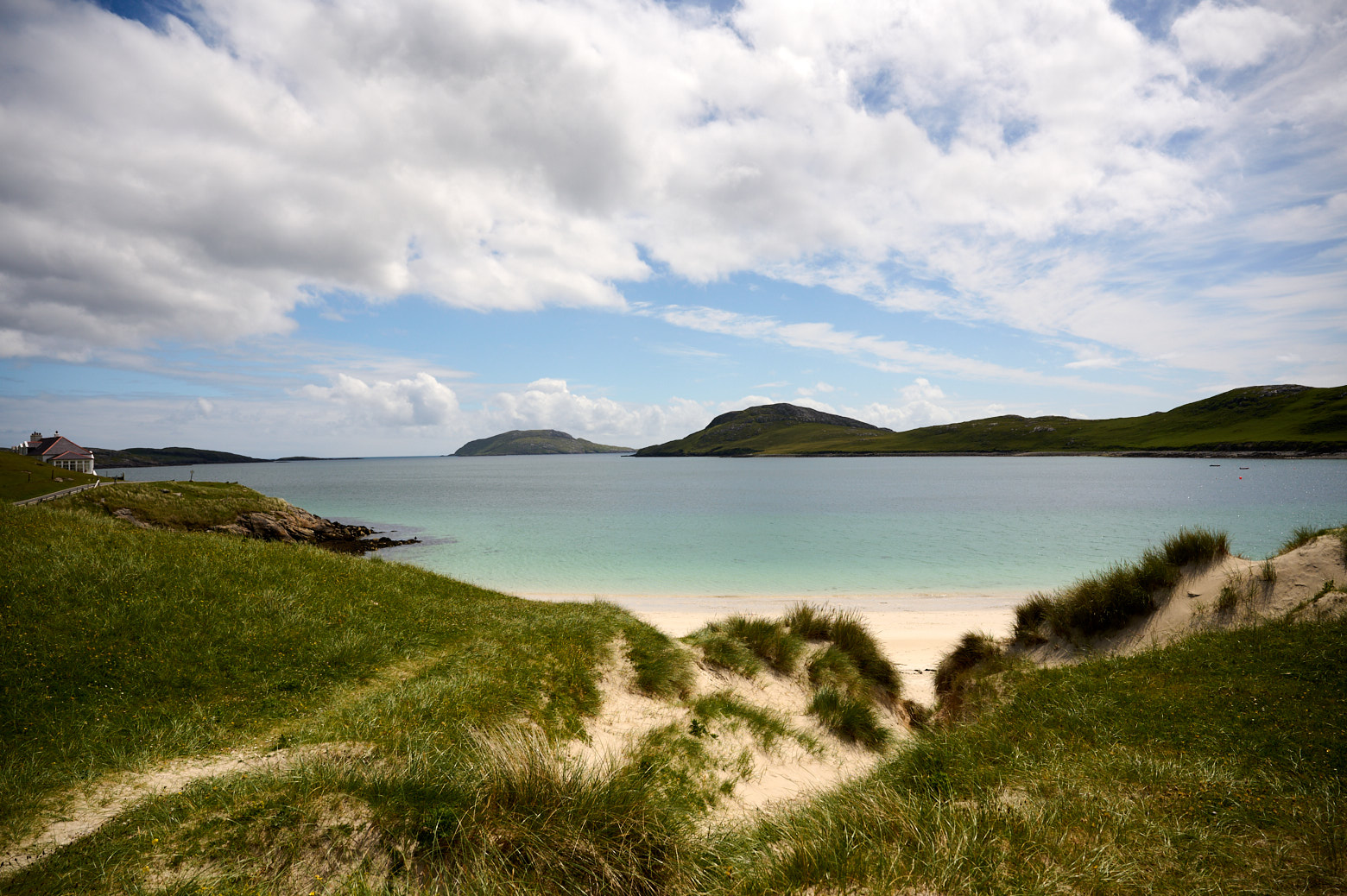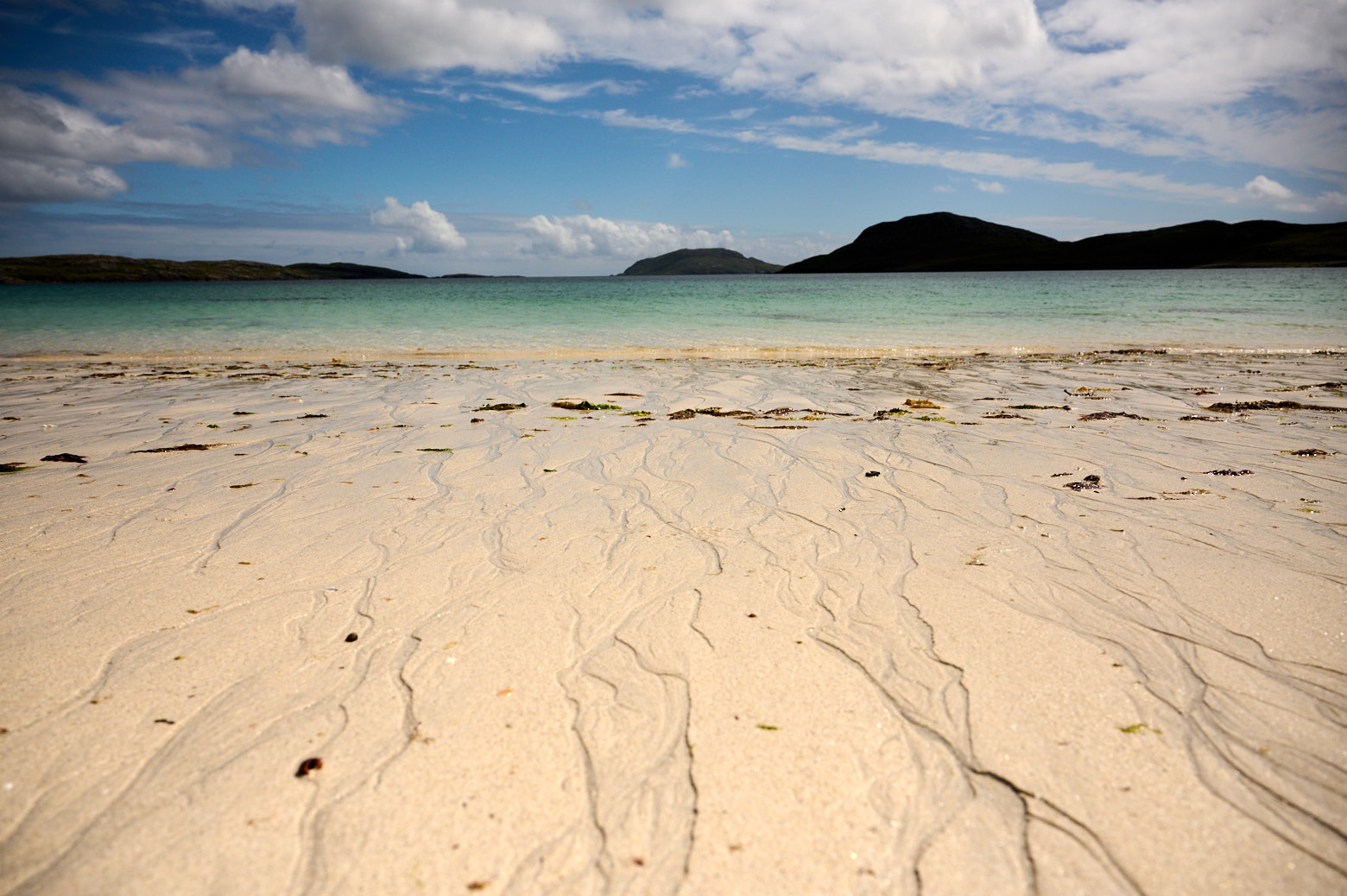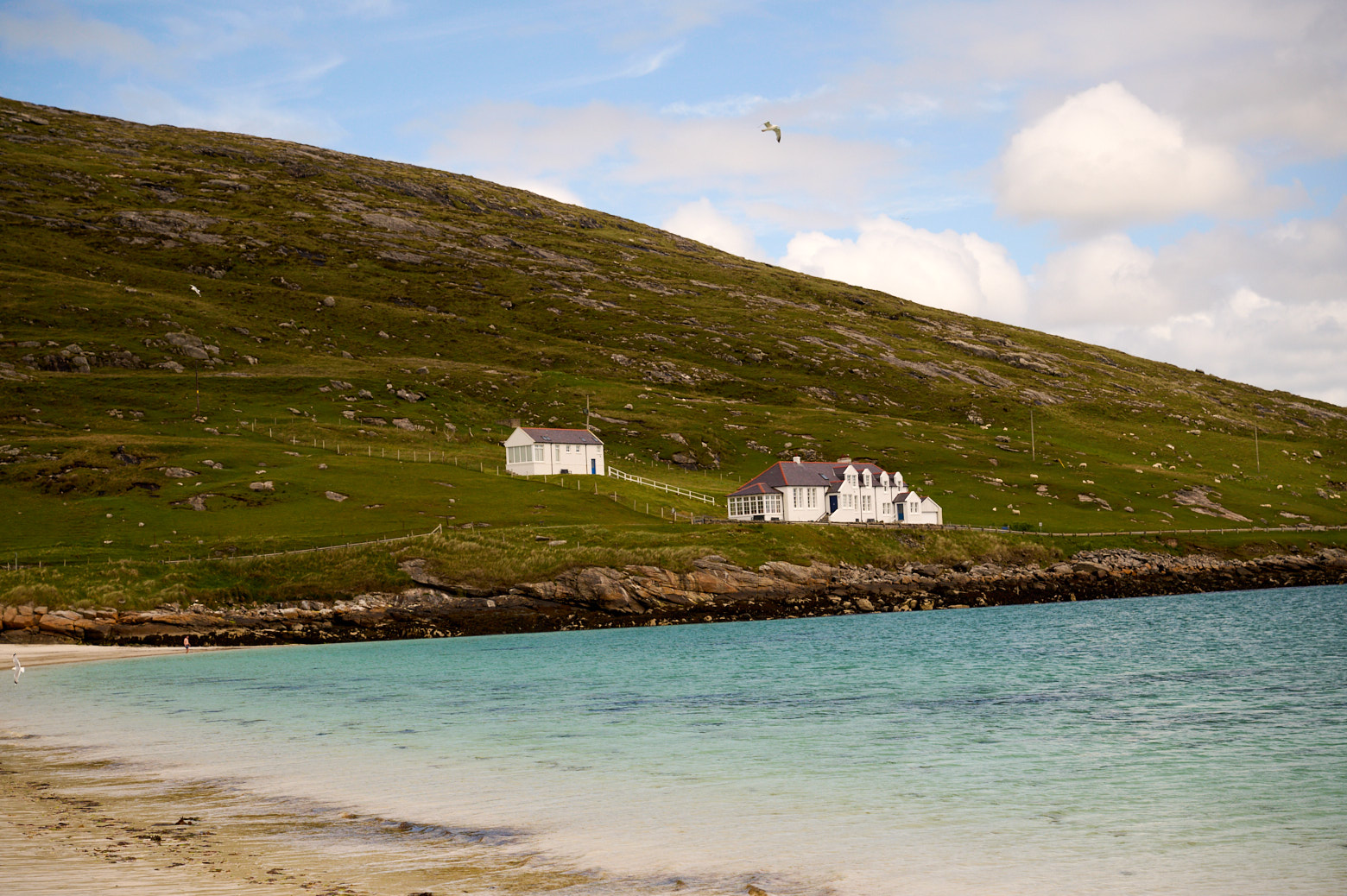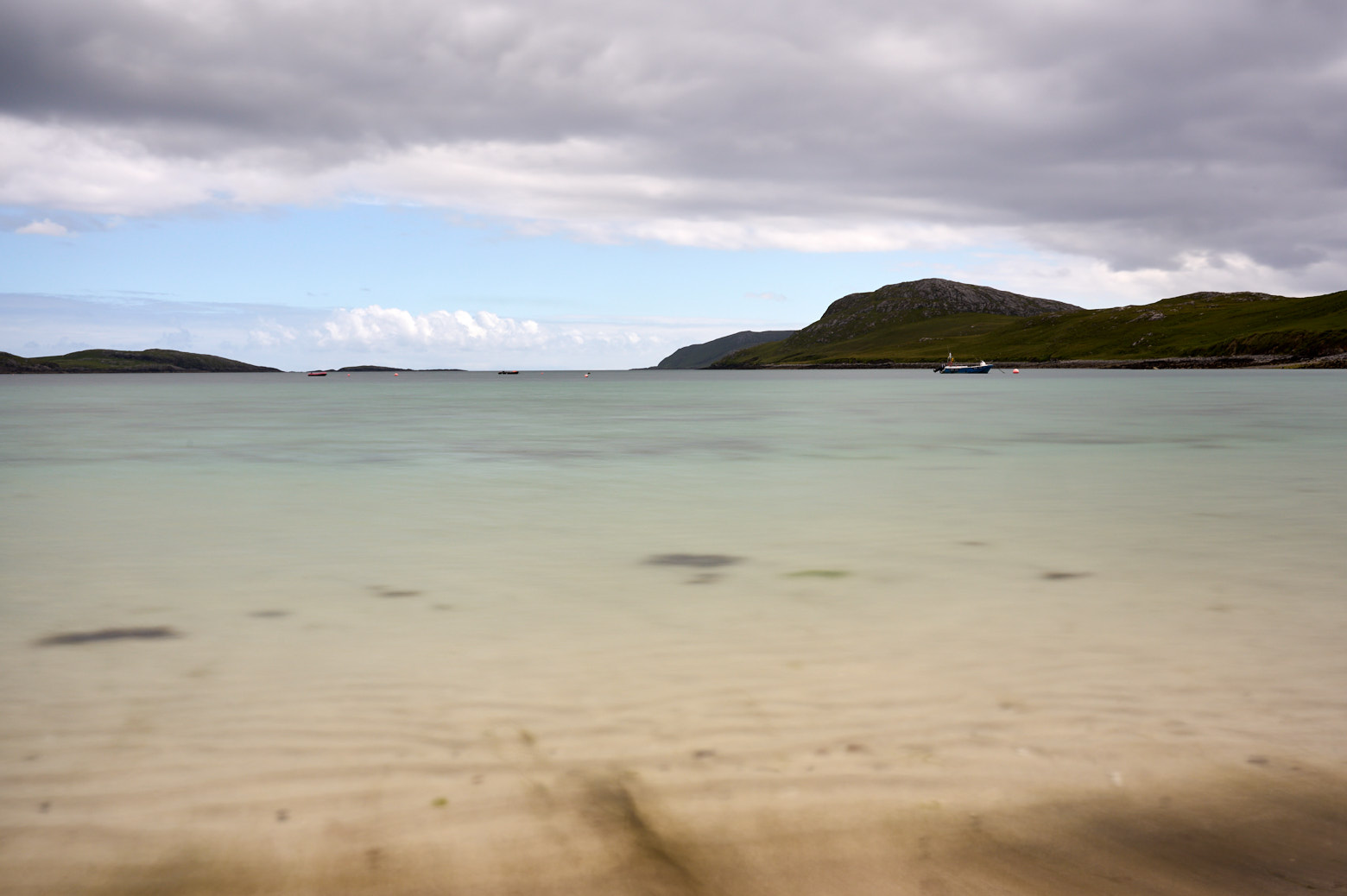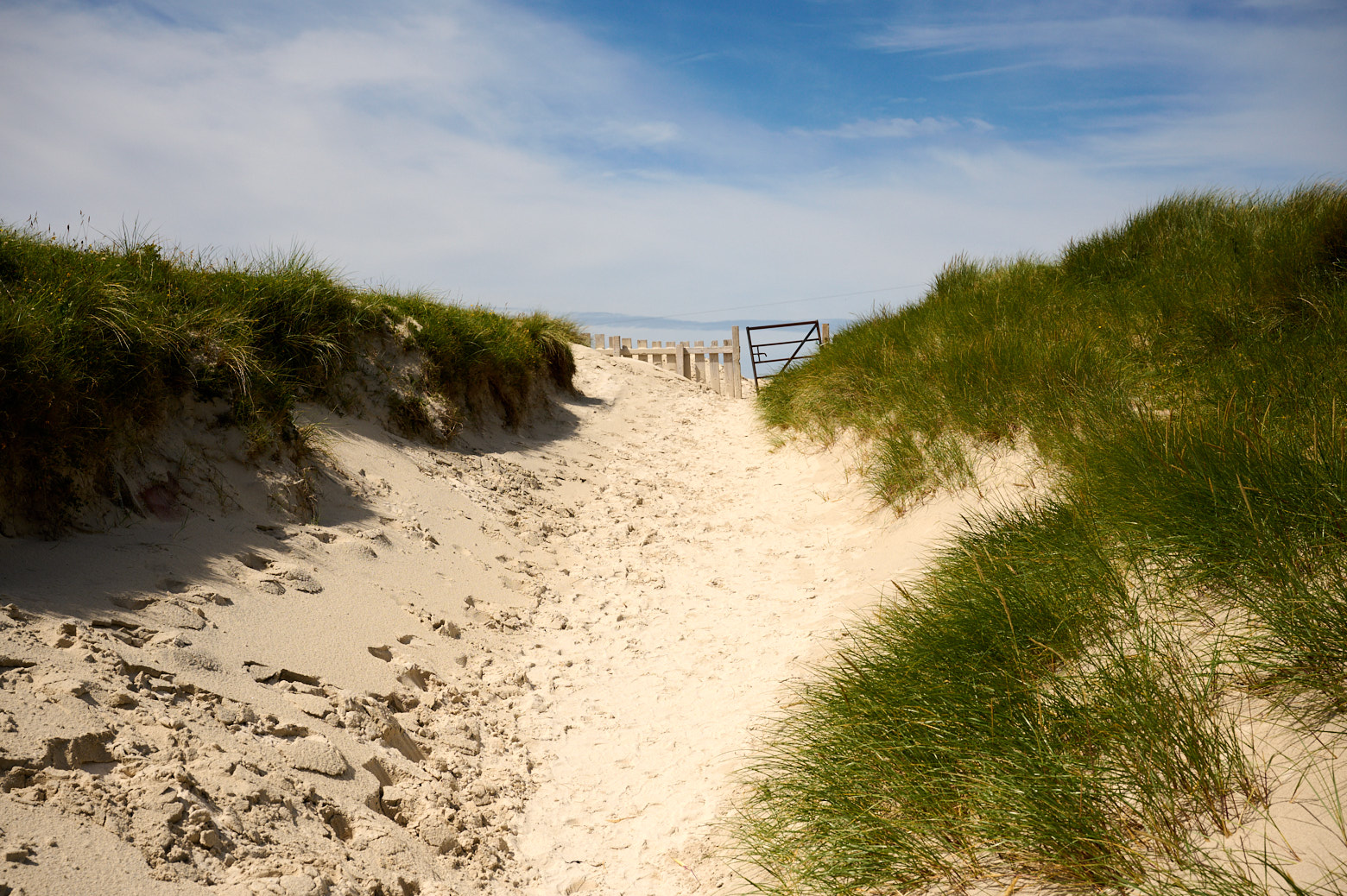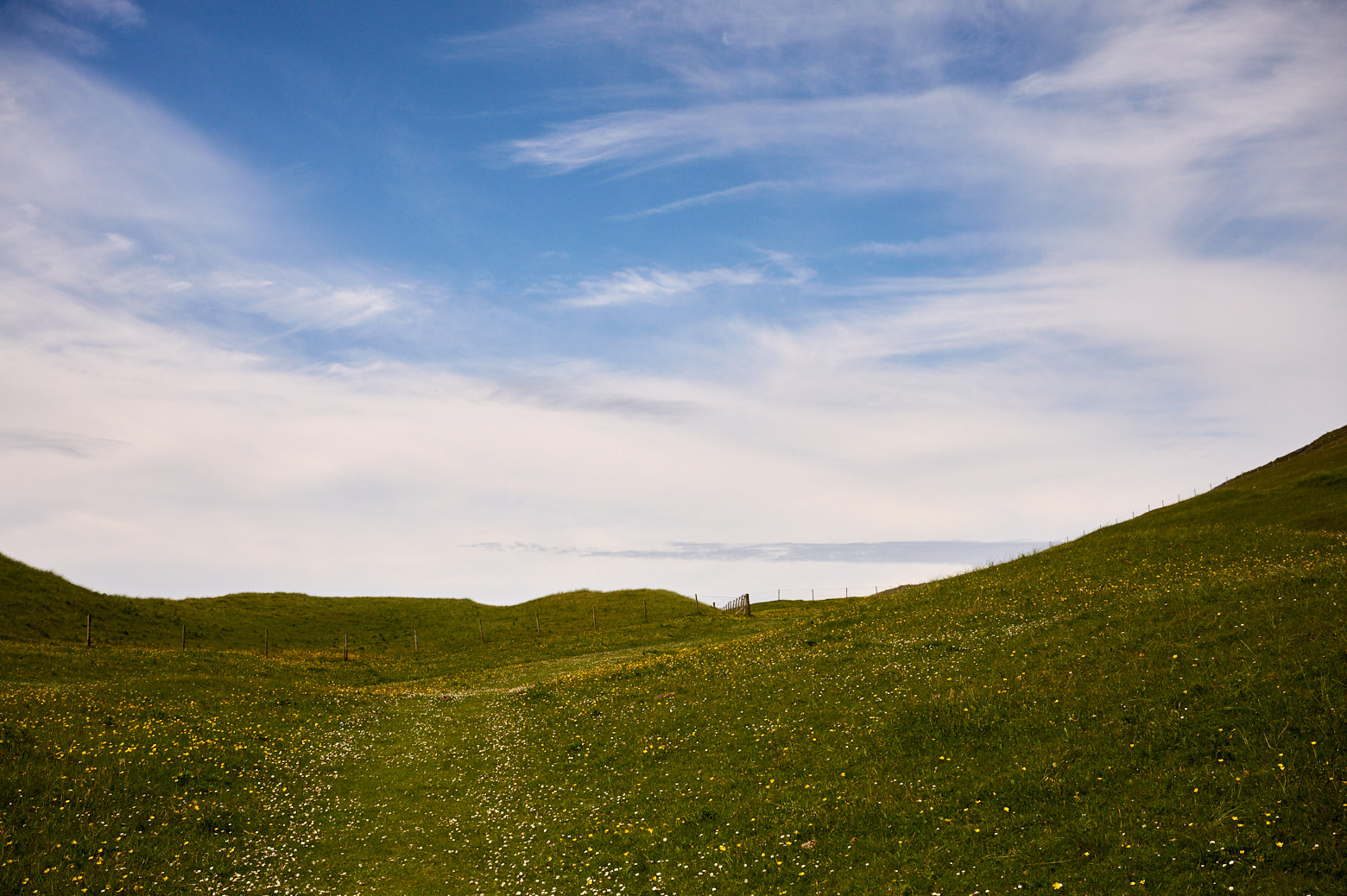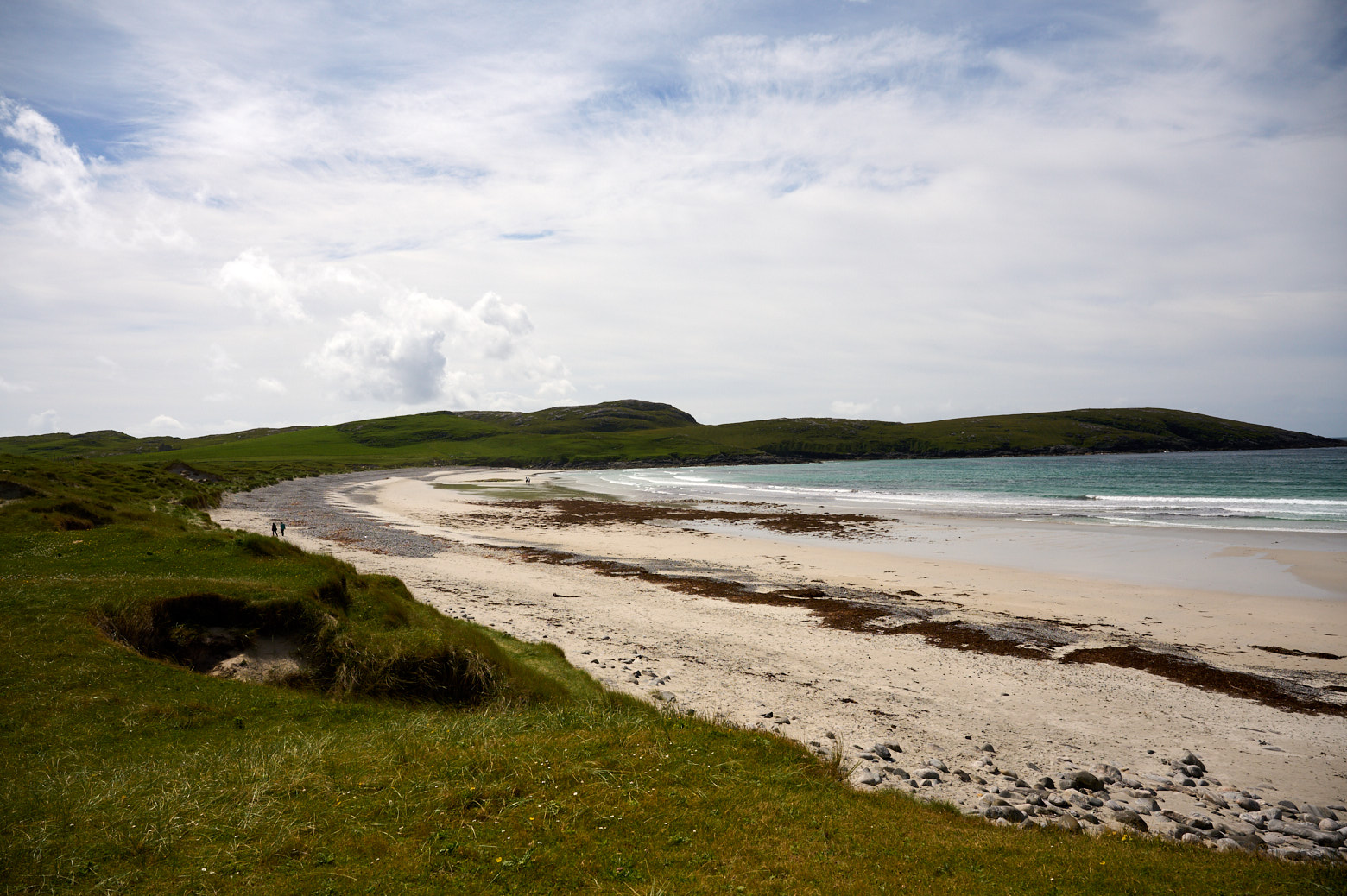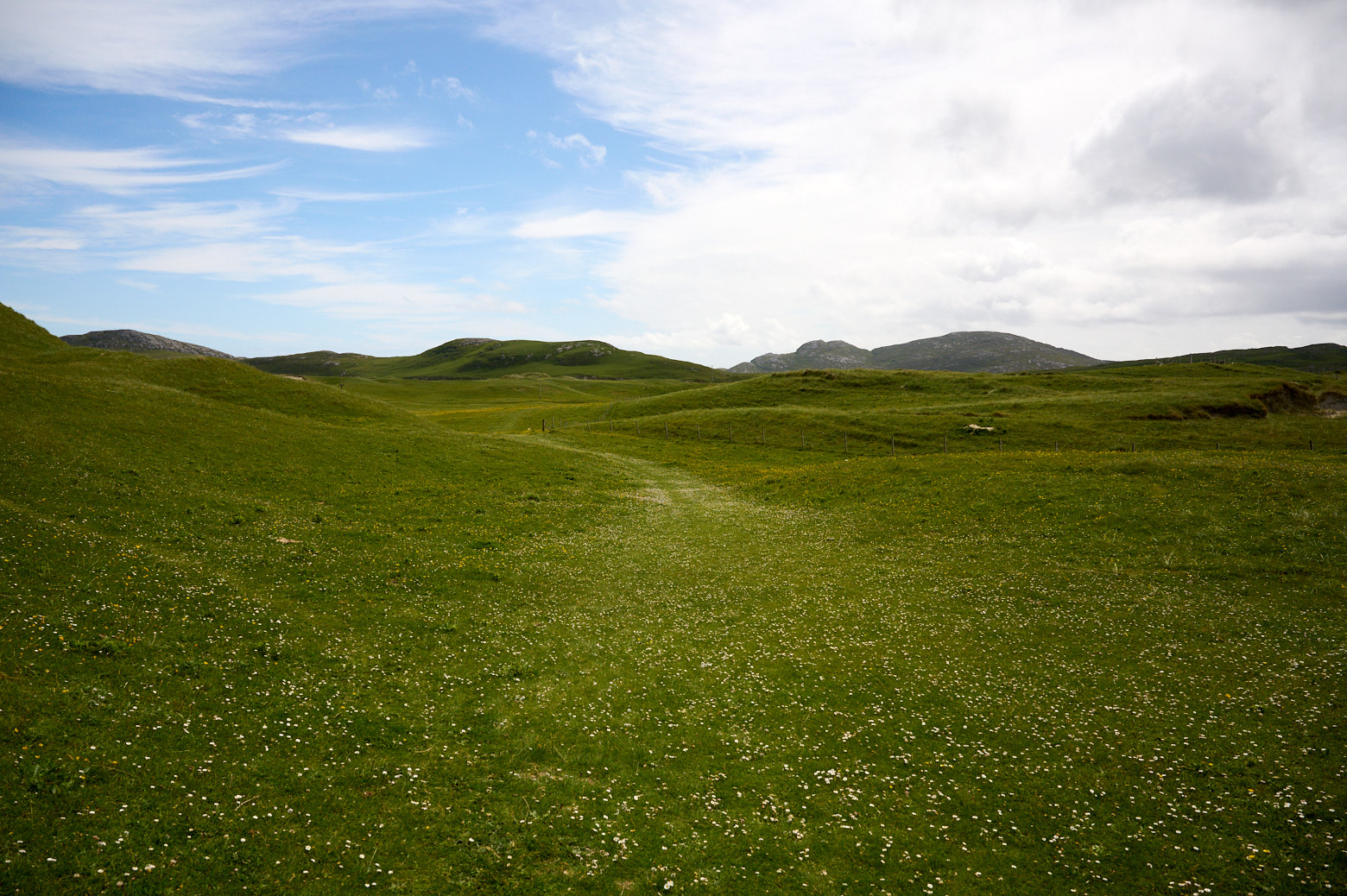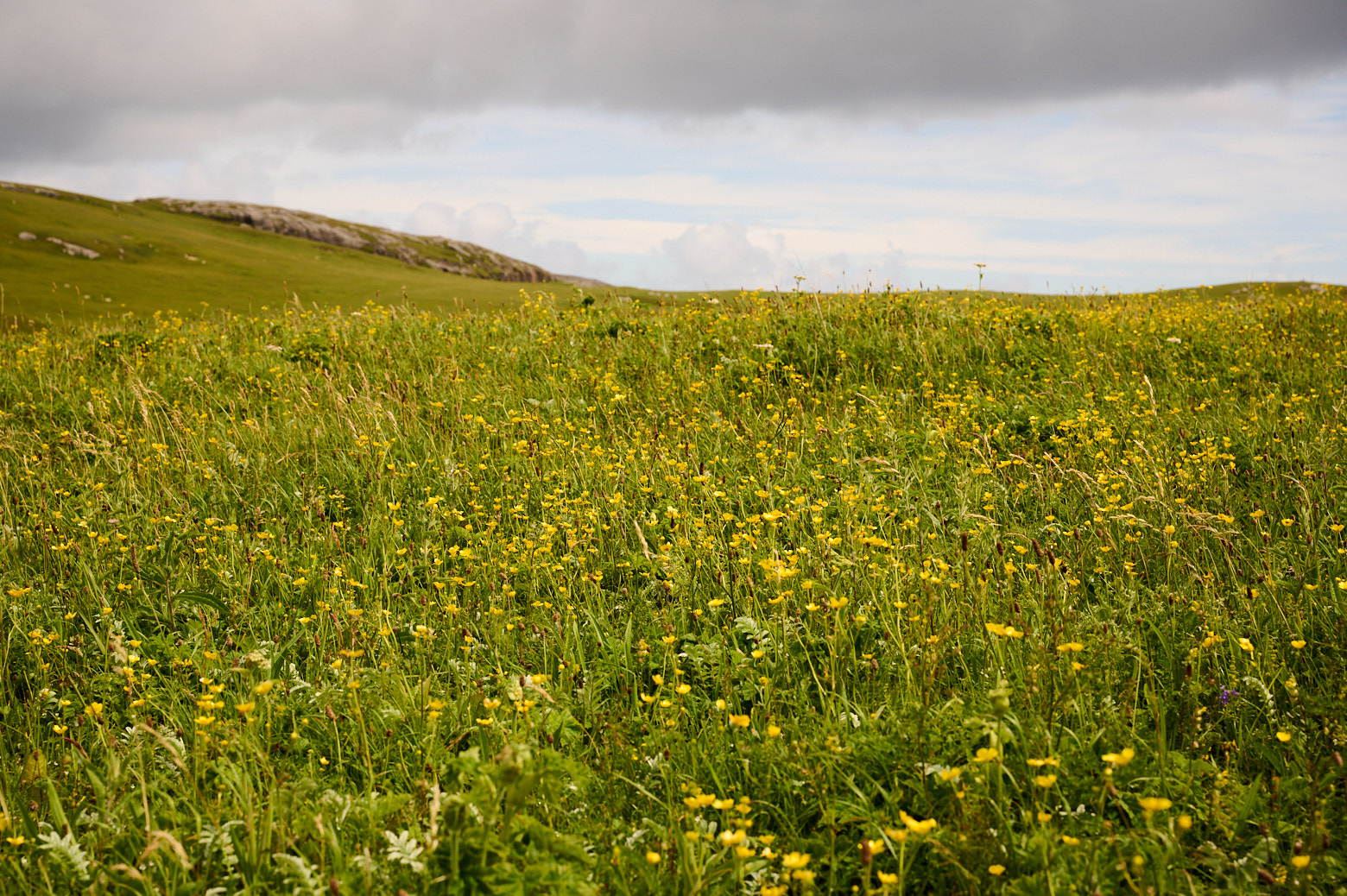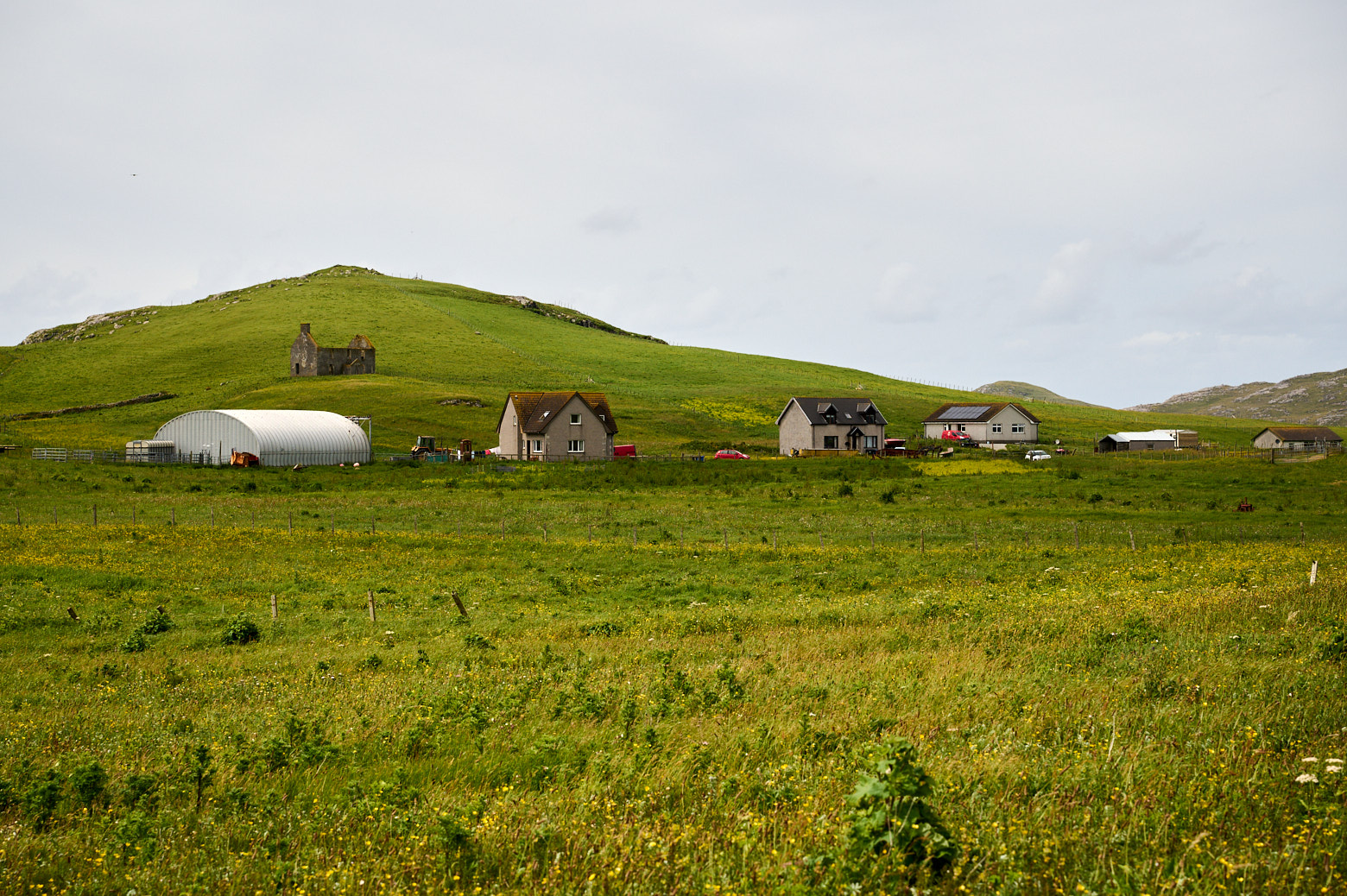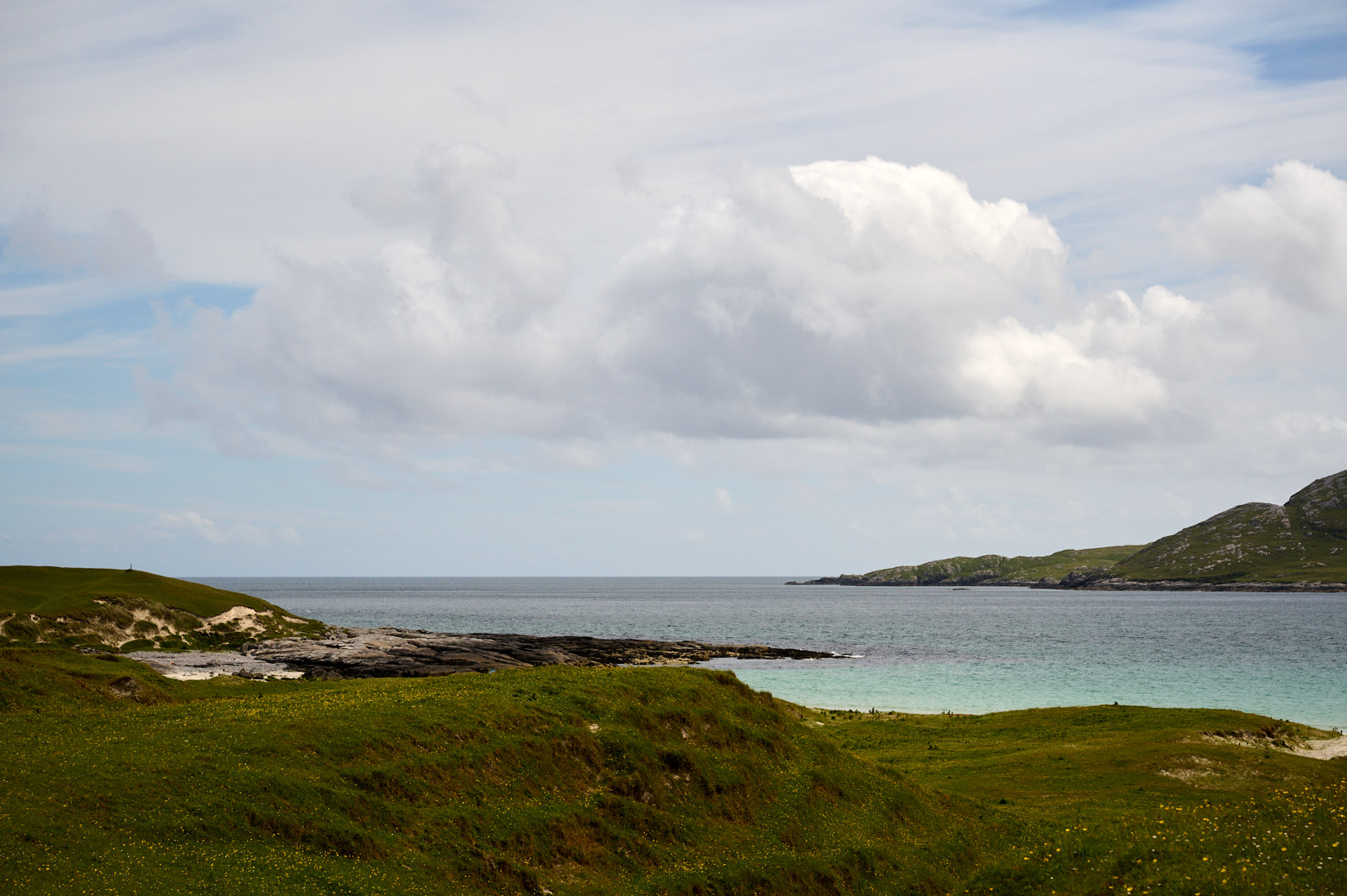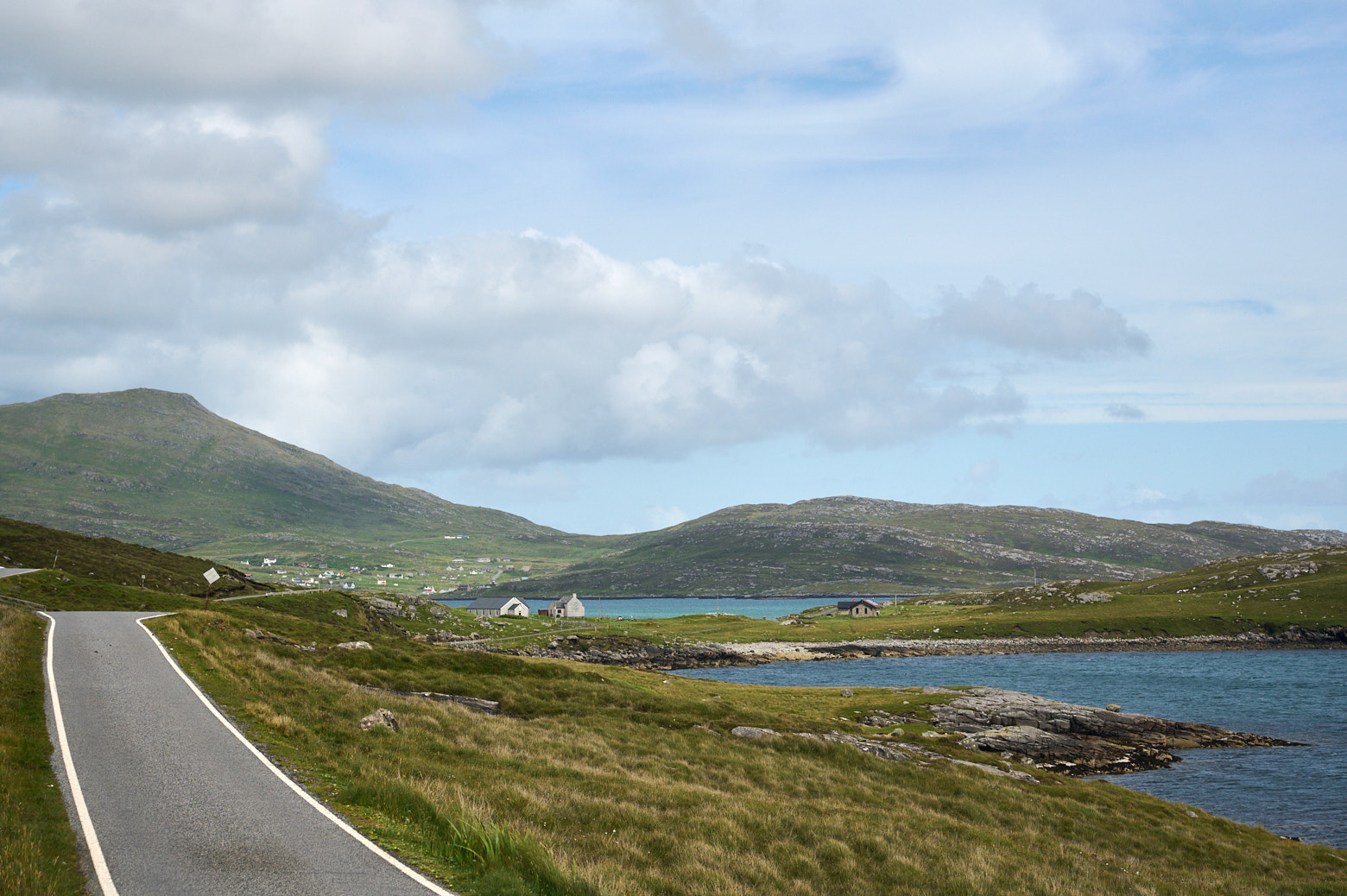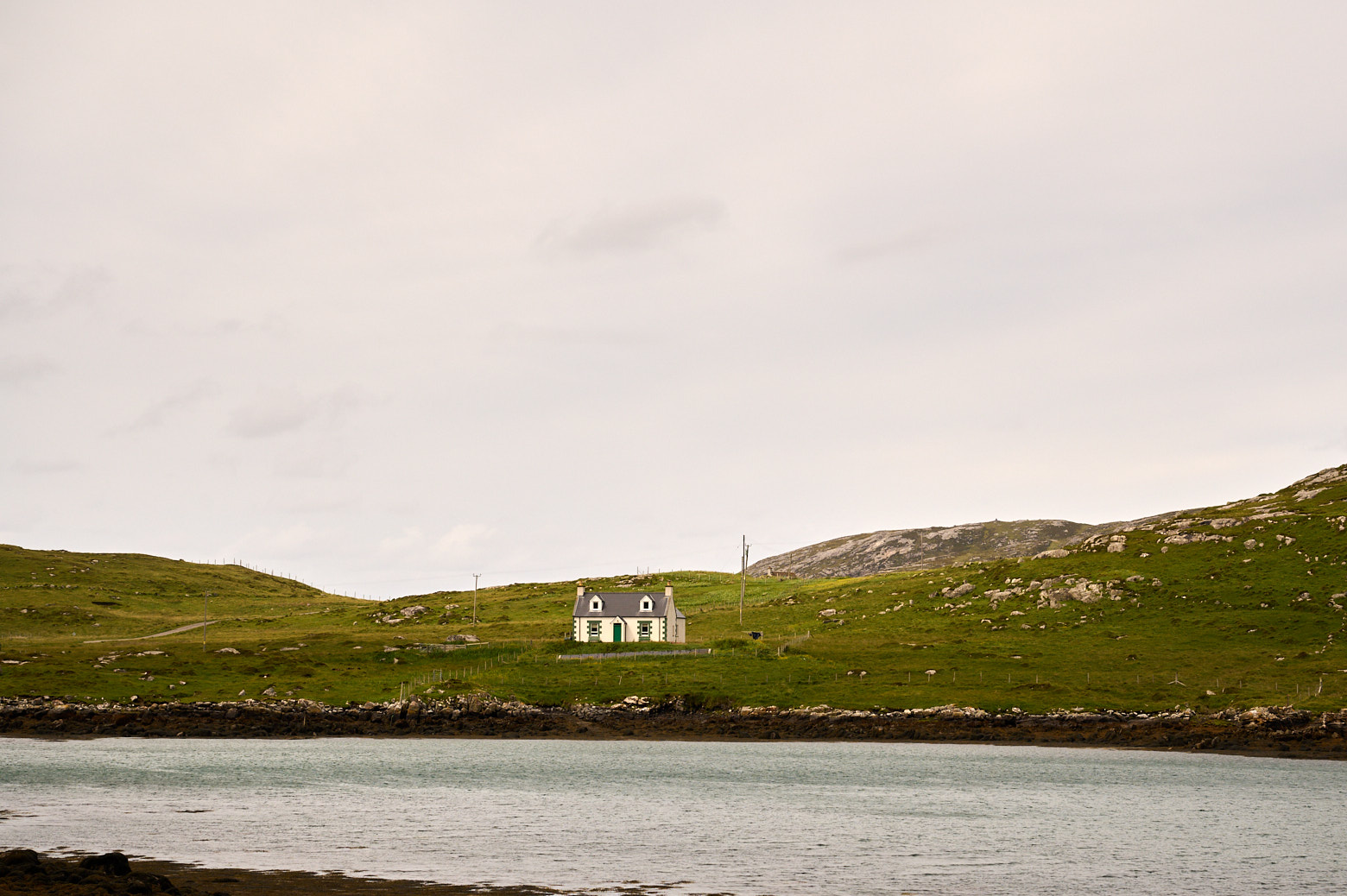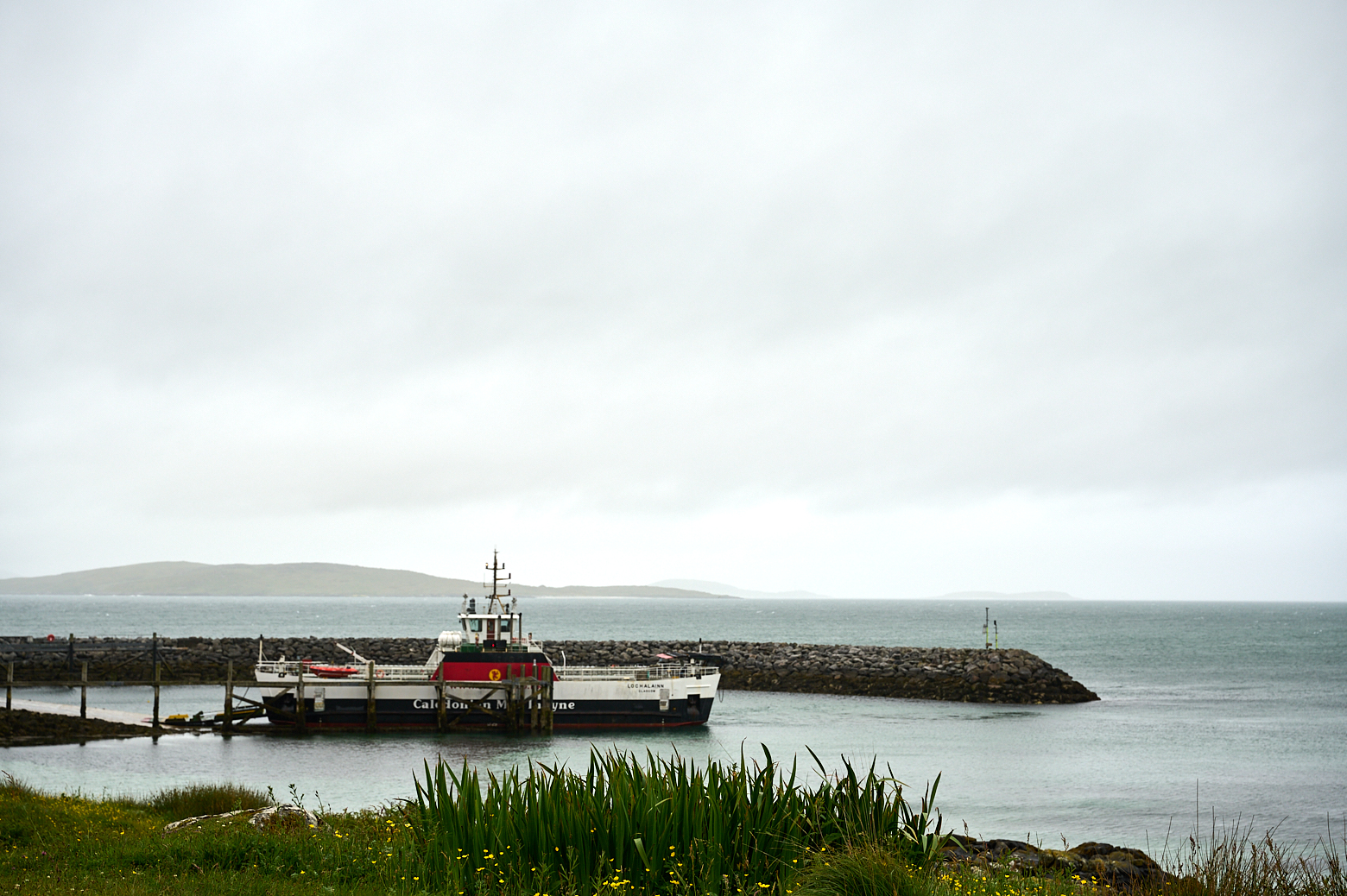
It was time to say goodbye to Barra and continue my journey to Eriskay and then South Uist. It was a pretty stormy day and there was an orange warning for the ferry. So everyone in the little cafe at the ferry terminal was quite excited when we saw the ferry coming, a bit late but she was coming and took us over to Eriskay. It was a bit of a wild ride, the waves were crashing over the ferry so all of the cars (and foot passengers) got a good wash.
But we arrived safe and sound (and a bit wet) in Eriskay!

I stopped right away at this beach next to the harbour, Prince´s Charlies Bay. Bonnie Prince Charlie landed here in Eriskay on 23rd July 1745.
Accompanied by only seven supporters the Prince landed off the French frigate Du Teillay at Coilleag a Phrionnsa. Ranald MacDonald, the Captain or chief of the MacDonalds of Clanranald was absent at the time so the Prince summoned his half-brother, Alasdair MacDonald of Boisdale to meet him on Eriskay. (Visit Outer Hebrides)
But he got told that the local clans, the MacDonalds of Clanranald, the MacDonalds of Sleat in Skye and the MacLeods of Skye would not support him and he should get back home. The Prince then sailed to the mainland and raised an army there.


The ferry going back to Barra.
Polochar standing stone
I crossed the causeway going to South Uist and made another stop at the Polochar Inn and the Polochar Standing Stone.
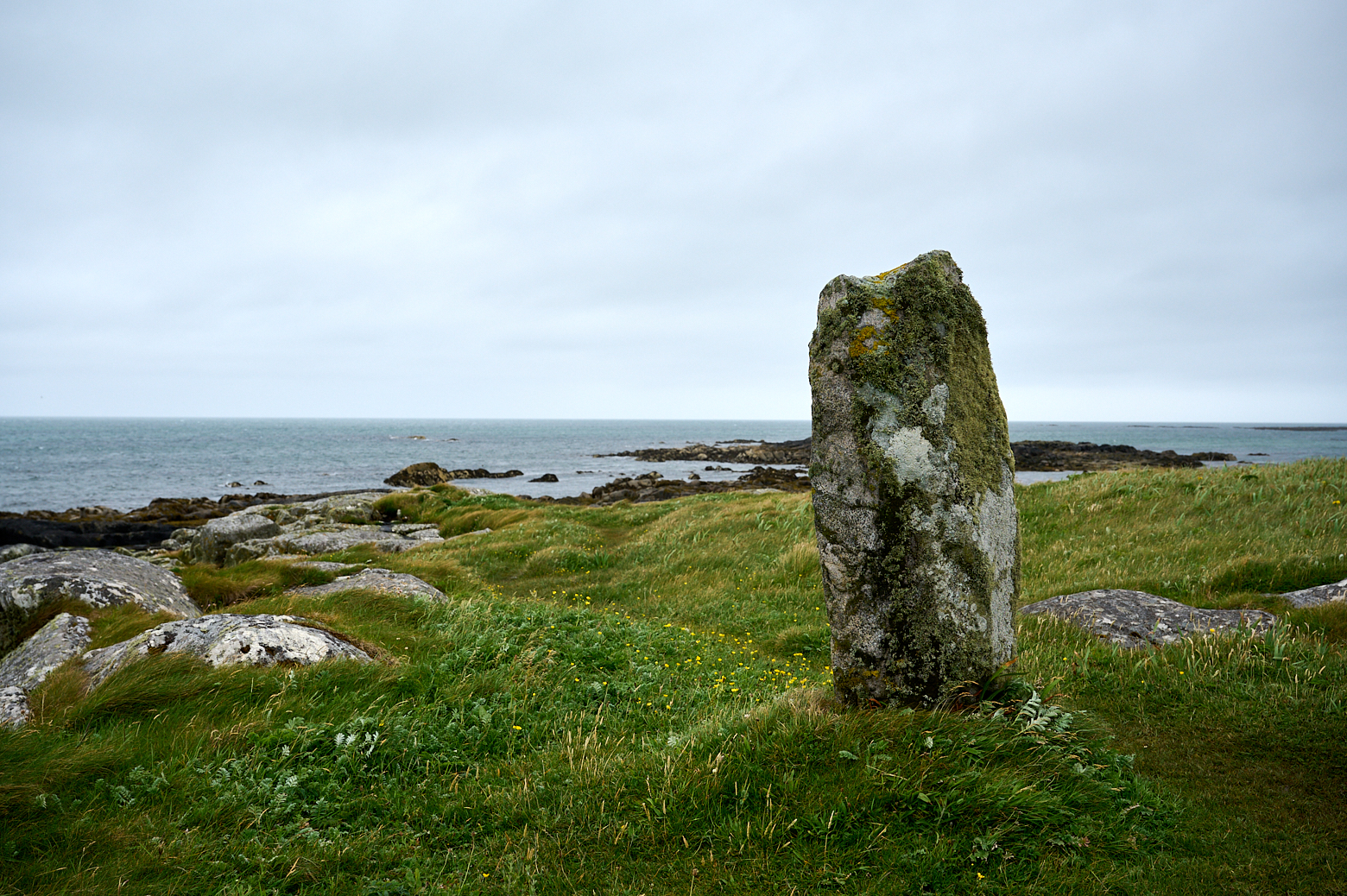
The stone probably dates from 2000BC – the views around here are amazing.
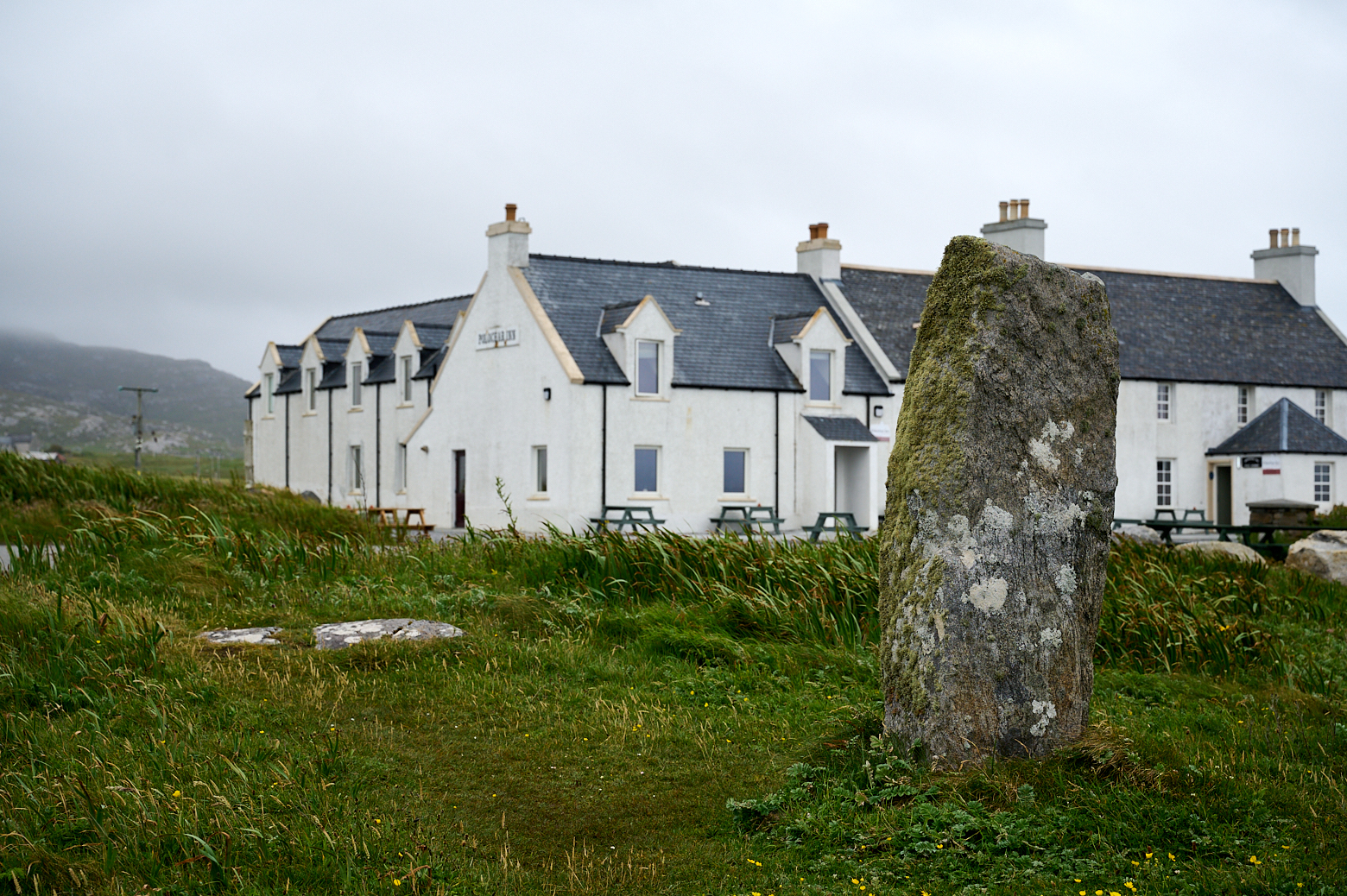
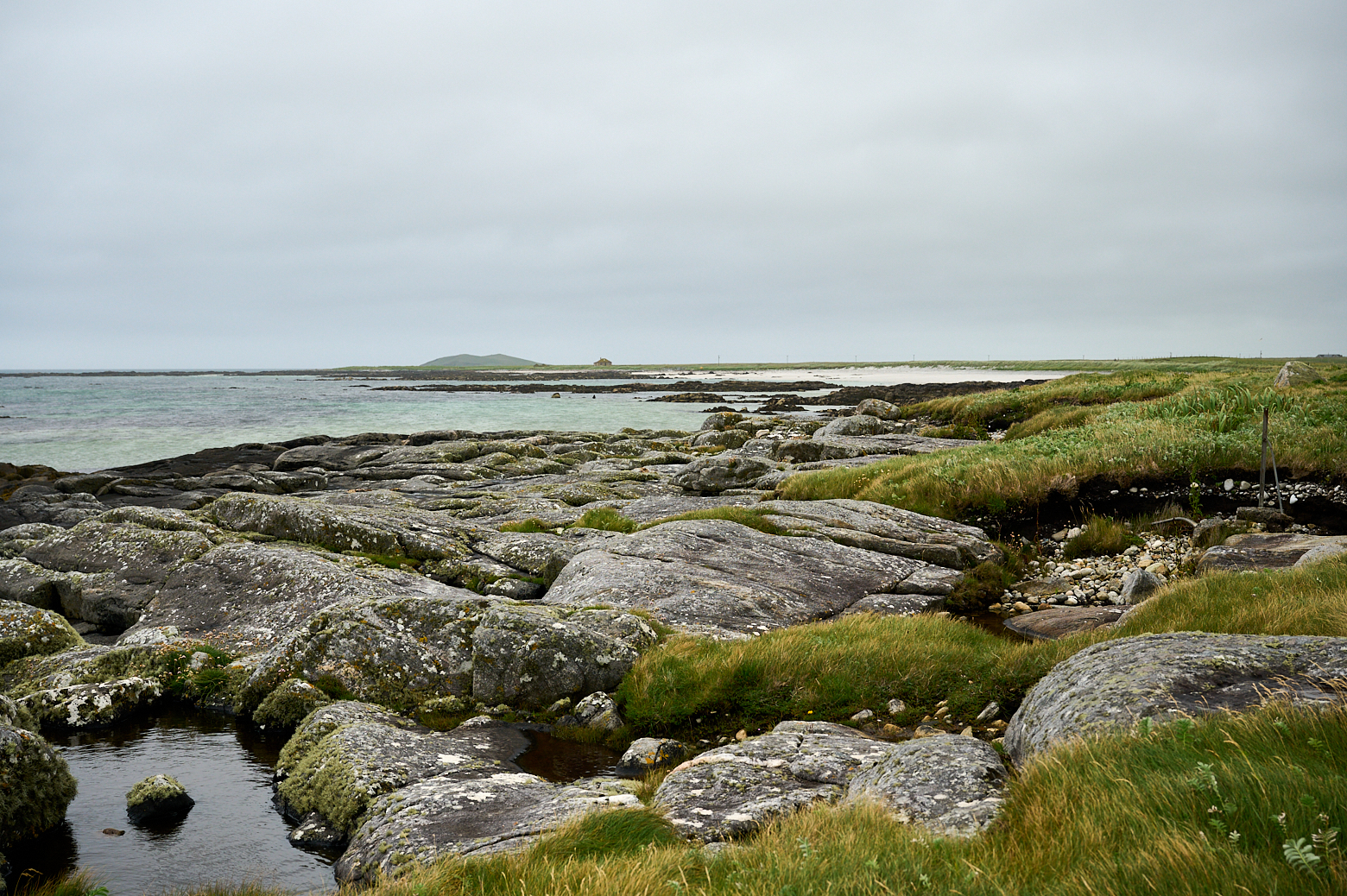
I continued my way towards my accommodation in South Uist but had to take a picture of this imposing church along the road.
